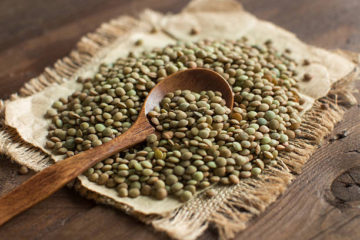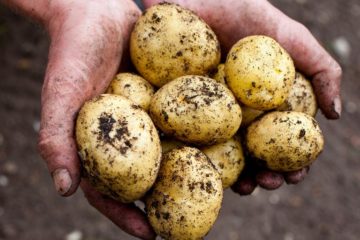In recent years, concerns about eating foods rich in phytate have come into the nutrition world. As a result, many people are avoiding foods seen as healthy for millennia. This post aims to look into the research and find out what is the foundation of the phytate fears. Are phytates a real concern, or are there actually benefits of phytates?
What are phytates?
All plant seeds contain a substance called phytate or phytic acid. This substance is unique to plant seeds. The other name for phytic acid or phytate is inositol (hexaphosphate) which we see added to many foods. Phytic acid is the storage place of phosphorus. When seeds sprout, with moist conditions, the phytate degrades, releasing the phosphorus to help grow the young plant. Beans, grains, nuts and seeds contain the highest levels of phytate. This is why the soaking of grains, seeds, nuts and legumes reduces the phytate content.

The daily intake of phytate in vegetarian diets is about twice that of those eating non-vegetarian diets.
Problems with phytate
Eating foods high in phytate can reduce the availability of minerals, especially iron, zinc and calcium. Phytates DO prevent the absorption of many nutrients. This is a chief reason Paleo – low carbohydrate diet promoters recommend avoiding legumes and grains. Consuming foods high in phytates could potentially lead to nutrient deficiencies. Several other foods reduce mineral absorption as well. You can read about them in <this Harvard review>.
The problem is that phytates are actually anti-nutrients. Plants produce various ‘anti-nutrients’ to protect themselves from bugs. Organically grown plants have more anti-nutrients than normal commercially grown plants because they have no chemical pesticides to protect them. They then produce their own bug-protection.

Phytates have been heavily researched. After all, if they stop us absorbing minerals, we shouldn’t eat many of them, should we? We needed to find out if there were any benefits of phytates at all!
It was discovered that the anti-nutrient effect of phytates only caused problems when a lot of foods high in phytates were combined with a low nutrient diet.
Foods high in phytates DO reduce the number of minerals absorbed – from that meal. But they do NOT reduce the number of minerals absorbed from other meals.
Our options are therefore:
- DO NOT eat high phytate foods such as beans, nuts or grains at every meal of the day. or
- Eat SO MANY plant foods that the amount of minerals flooding in overwhelms any chance of phytates to cause nutrient deficiencies.
This latter method is apparently the way the longest-lived people on earth cope with the ‘phytate problem.’ Eating phytates at every single meal does not apparently shorten their lives or cause nutrient deficiencies and disease.
I found that since starting to eat high phytate foods at every single meal, my health improved in many ways.
Benefits of phytates for your bones
At one time, researchers were concerned that phytates might reduce calcium absorption leading to weaker bones. This idea came from studies on rats in which rats were fed the equivalent of us eating 10 loaves of wholemeal bread a DAY. Quite an unreasonable amount of phytates!
Then they found the opposite was true. People with diets higher in phytates actually have less osteoporosis. Human bodies tend to adjust to high phytate diets over time. Bone density then improves overall, and bone loss from hips and spine lessens. In other words, there are many benefits of phytates for our bones.
Our bones are made up of a mineral matrix as well as bone eating cells (osteoclasts) and bone forming cells (osteoblasts). There are other cells too; but this is just a simplification of a complex process. All-day long these cells break bone down in areas it is not needed, and reform it more densely in areas needing strengthening.
When we exercise with weights, for example, those weight-bearing bones get denser as more bone is formed by the osteoblasts so that bone won’t break as we add more weight.
What happened to my knee

When I fell up a stair in Norway last year and hurt my knee badly, I ended up with a big ball of hard bone at the part of the knee where I hit my knee. Many X-rays showed the knee function was fine, but this bump had me wondering. My physio explained that with the super-hard bump, my body had decided more bone was needed there to protect the important knee joint from future bumps, so had gone to work forming a big boney cap. Hopefully, soon, my body will decide it was a false alarm – I’m not planning to trip up any more stairs for a while – and the osteoclasts will break it down and put the extra bone elsewhere!
But perhaps not so fast while I continue to eat high phytate foods all day long! Because phytates actually block the formation of the bone-eating cells. When we eat phytate-rich foods, those osteoclasts don’t form so fast, so our bones don’t break down as fast. And that appears to be the reason people who eat a lot of phytates have stronger bones and fewer fractures.
Benefits of phytates for colon cancer
When cancer is growing in an organ, one of the signs of the stage it has reached (its severity) is the amount of differentiation of the cancer cells. As cancer progresses, the cells lose their individuality and become “undifferentiated. A kidney cell no longer looks like a kidney cell – but like a weird “any cell”. The reasons pathologists can tell someone has breast cancer even though the tumour may be in the liver or lung is because some of the cancer cells still look like breast cells.

The amazing thing about phytic acid is that it actually causes what we call, “enhanced differentiation”. This means that when a person with advancing cancer increases phytic acid-rich foods in their diet, cancer cells that were becoming undifferentiated begin to reverse that process and go back to behaving like the normal cells they once were. This is the case with colon cancer cells. The benefits of phytates for cancer is immense!
Benefits of phytates for breast cancer
The same thing that happens with colon cancer cells when phytate-rich foods are eaten – also happens with breast cancer cells. In the presence of phytates, human colon cancer cells mature structurally and behaviorally to resemble normal cells. Leukaemia cells, prostate cancer and muscle cancer cells respond similarly to phytates.
One study of fourteen women with invasive breast cancer showed real benefits from eating phytate-rich foods. The women were randomly divided into two groups. One group got extra phytates; the other got a placebo. At the end of six months, the phytate group had a better quality of life, significantly more functionality, fewer symptoms from chemotherapy, and did not get the drop in immune cells and platelets patients normally experienced with chemotherapy.

Phytates as antioxidants
The antioxidative property of phytates is one of the most impressive characteristics of phytate. In fact, that’s why the meat industry adds phytates to meat—to prevent the oxidation of fat that begins at the moment of slaughter.
Phytic acid is a particular type of anti-oxidant which inhibits a type of free radical called a hydroxyl radical. These form when people eat too much iron-rich food, like meat. Opposite to what the meat industry advertises – eating iron-rich food is NOT a good thing. Yes, we need iron – but only a measured amount. Too much and these dangerous hydroxyl radicals form and then damage every organ they come in contact with. Phytates, functioning as anti-oxidants, reduce the formation of these oxidising iron-mediated free radicals.

The benefits of phytates for cardio-vascular health is immeasurable because this oxidation process is what primarily damages arteries. Phytates combat this process.
The side effects of phytates in food are less heart disease, as well as less diabetes and fewer kidney stones.
If you need to reduce phytate
Three ways to reduce phytates in your food:
- sprouting – beans, lentils, whole grains and even nuts can be sprouted, then ground or cooked as before. This changes the flavour in some cases. I love eating sprouted grain bread. Grains are sprouted then pressed into a loaf and baked. This can be purchased from organic stores and Health Food Shops.
- soaking – beans are usually presoaked to cut down on cooking time, and oats are often presoaked also for the same benefit.
- fermenting – bread fermentation (with yeast) lowers phytic acid
This is worth trying if you have unexplainable low iron levels. It can result in increased iron absorption.
Phytate summary
There is rarely anything new in nutrition. See <this blog post> to see why we just THINK there is radical new information about what is healthy to eat and what is not. This post explains why the same things we have known were important for over 50 years – are still healthy. Nothing has changed.
As a result, when we see a headline or new diet discouraging the consumption of whole grains or legumes – “because they have phytates and this will cause nutrient deficiencies” – take it with a grain of salt. These foods have always been important – and those studies showing them to be “dangerous” were simply not very reliable studies. These foods are still good foods – and the more of them we eat – in the context of an otherwise healthy diet and lifestyle – the better!



0 Comments